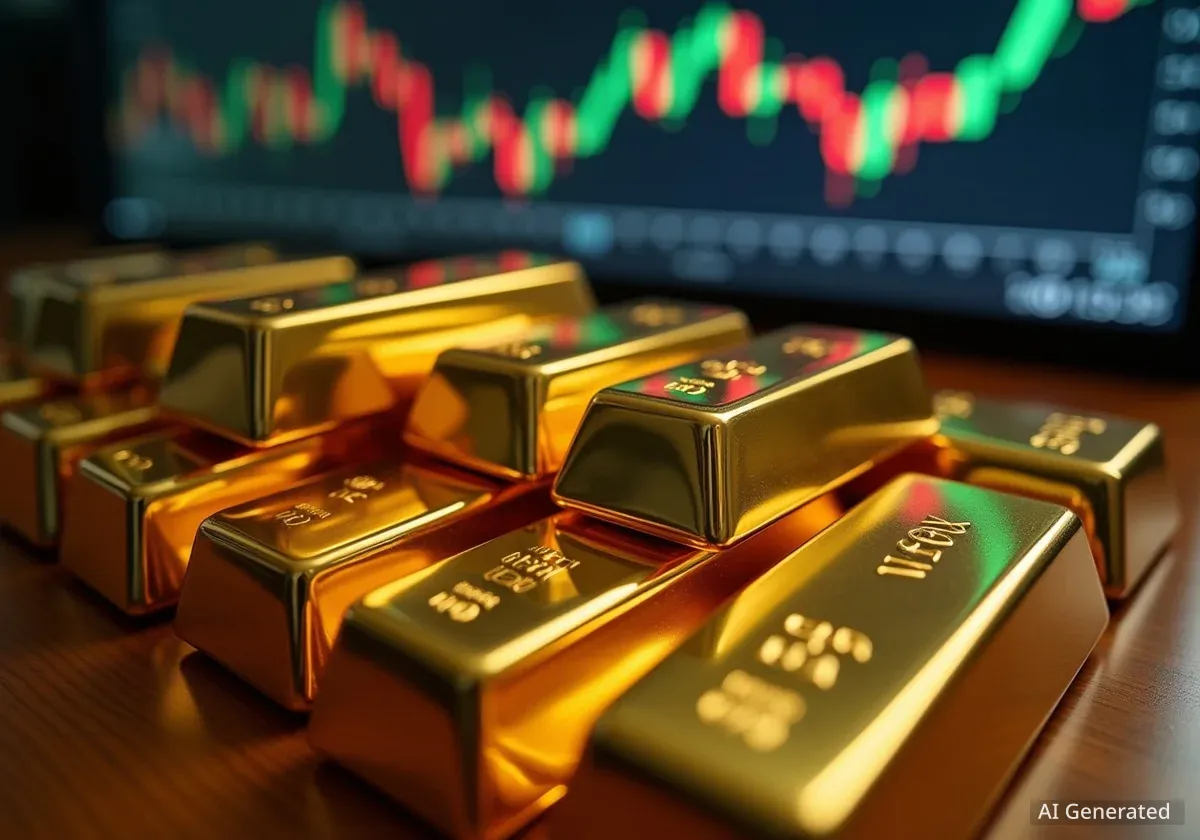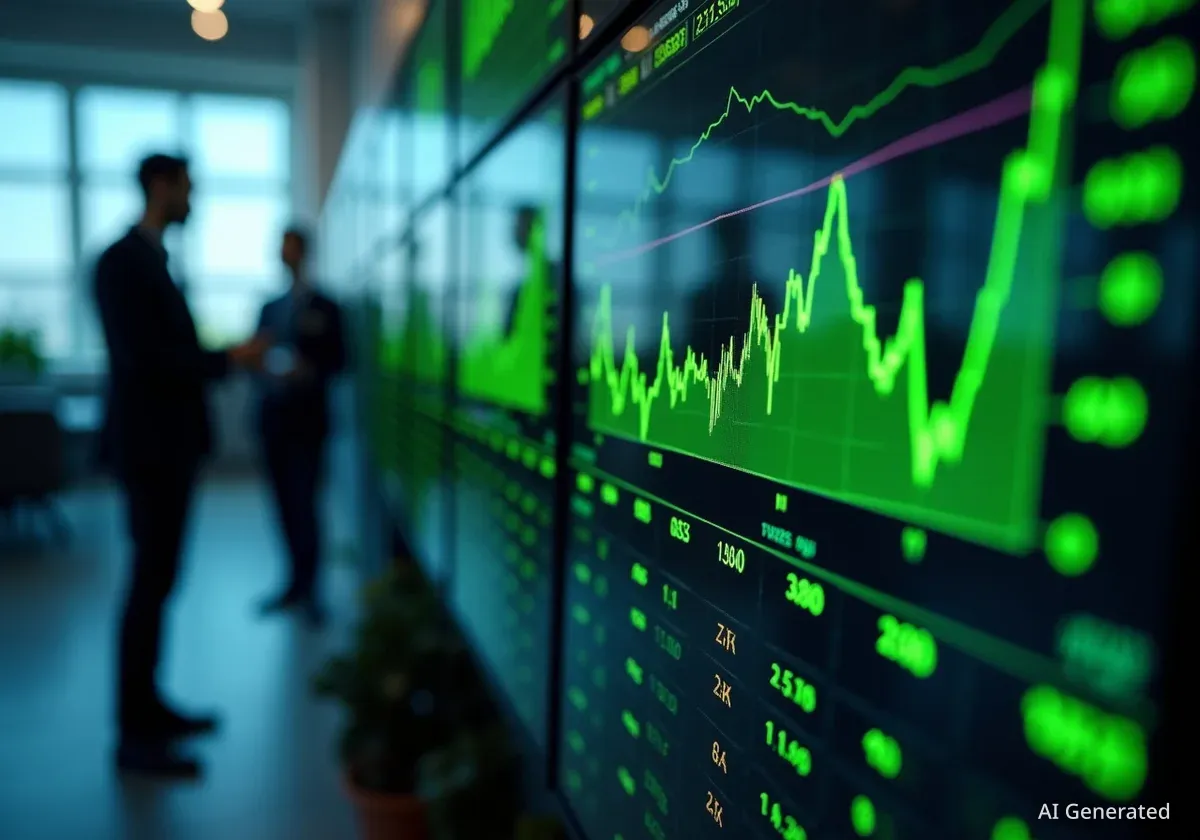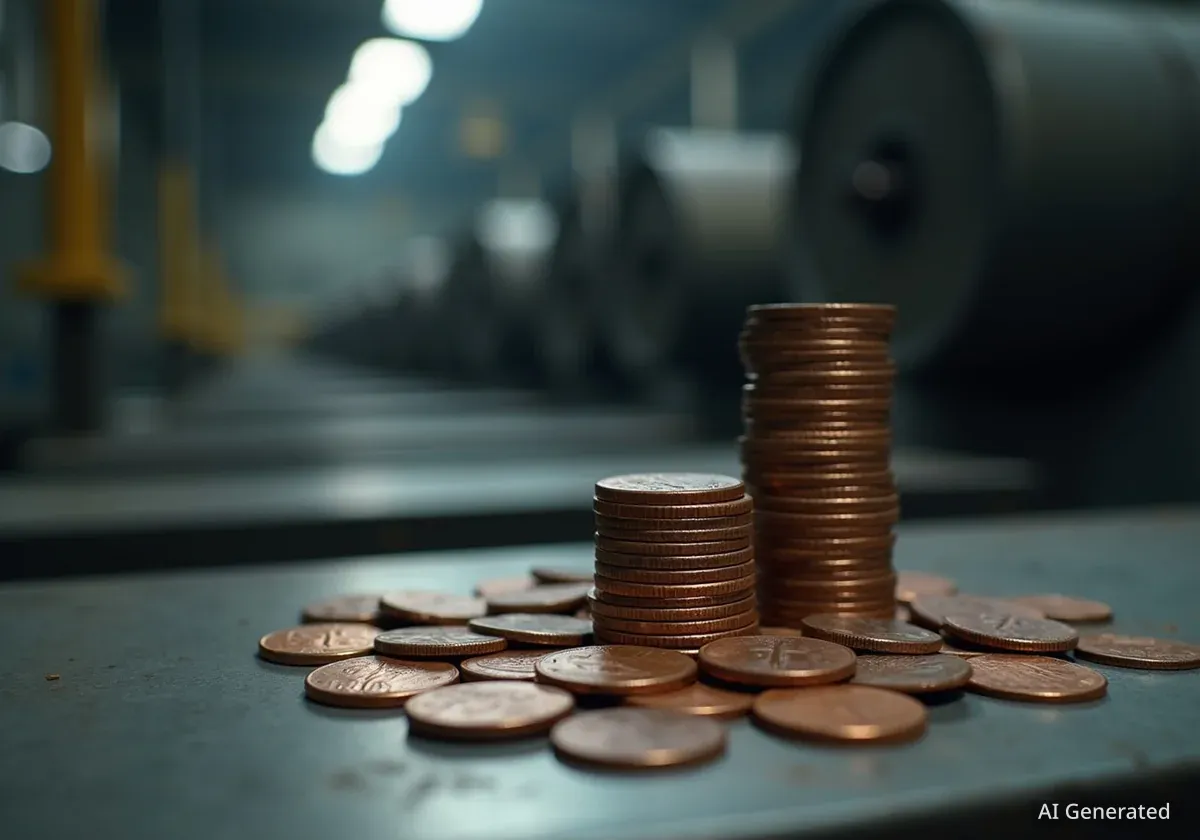Gold prices maintained levels just below a recent record high on Wednesday as investors processed mixed signals from U.S. Federal Reserve officials and monitored escalating geopolitical tensions. The precious metal is trading near $3,775 per ounce, supported by strong investor demand and central bank activity.
The market is carefully weighing comments from key Federal Reserve figures while anticipating crucial inflation data later this week. These factors, combined with a volatile international landscape, are creating a complex environment for commodities traders and shaping short-term price movements for gold and other precious metals.
Key Takeaways
- Gold is trading around $3,775 per ounce, approximately $20 below its recent all-time high.
- Investors are analyzing differing statements from Federal Reserve officials regarding future interest rate policy.
- Heightened geopolitical tensions involving Russia and comments from U.S. officials are adding to market uncertainty.
- Strong inflows into gold-backed Exchange-Traded Funds (ETFs) and demand from central banks continue to support prices.
- The upcoming U.S. Personal Consumption Expenditures (PCE) index is a key data point for future Fed decisions.
Federal Reserve Policy Under Scrutiny
Investor attention is firmly fixed on the U.S. Federal Reserve, as officials provide commentary on the economic outlook and the future path of monetary policy. The central bank's recent interest rate cut has been a primary driver for gold's strong performance this year, making any new statements highly significant for the market.
Contrasting Views from Fed Officials
Federal Reserve Chairman Jerome Powell recently acknowledged that both the labor market and inflation face ongoing "risks." However, his remarks did not give a clear indication that another interest rate reduction was imminent for October, leading to some caution among traders.
In a somewhat different tone, Federal Reserve Governor Michelle Bowman suggested that a faster pace of monetary easing might become necessary. She noted that if momentum in the labor market continues to decline, the bank may need to act more decisively to support the economy.
"The bank may have to accelerate the pace of monetary easing as labor market momentum declines," Governor Michelle Bowman stated, highlighting a potential divergence in opinion within the Fed.
This difference in perspective from top officials contributes to market uncertainty, as traders attempt to predict the Fed's next move. A lower interest rate environment typically benefits gold, as it reduces the opportunity cost of holding the non-yielding asset.
Why Fed Statements Matter for Gold
Gold prices are highly sensitive to interest rates and the value of the U.S. dollar. When the Federal Reserve lowers rates, it can weaken the dollar and make gold, which is priced in dollars, cheaper for foreign buyers. Lower rates also make other investments like bonds less attractive, increasing the appeal of gold as a store of value.
Investor Demand and Market Fundamentals
Beyond central bank policy, strong investor appetite for gold has been a crucial pillar of support for its price. This demand is visible through significant inflows into investment vehicles tied to the precious metal, reflecting a broader search for safe-haven assets.
According to data compiled by Bloomberg, inflows into gold-backed exchange-traded funds (ETFs) reached their highest level in three years last Friday. This trend indicates robust confidence among both institutional and retail investors.
ETF Holdings Surge in 2025
Holdings in gold-backed funds have increased by approximately 400 tons so far this year. Data shows that holdings have risen in every month of 2025 except for May, underscoring a consistent and sustained demand for the metal as an investment.
Central bank purchasing also remains a significant factor. News reports have further fueled bullish sentiment. On Tuesday, gold prices rose by 1.2% after a Bloomberg report suggested that China is exploring a potential role in safeguarding foreign sovereign gold reserves. Such a move would reinforce the metal's importance in the global financial system.
Geopolitical Tensions Add to Market Uncertainty
The global political climate is providing an additional layer of support for gold prices. Investors often turn to gold during times of international instability, and recent events have amplified its appeal as a safe-haven asset.
Tensions involving Russia have become a key focus. During a meeting at the United Nations General Assembly, former U.S. President Donald Trump made strong statements regarding potential military responses to airspace violations.
When asked if NATO allies should shoot down Russian aircraft that violate their airspace, Trump responded, "Yes, I think so." These comments suggest a more confrontational stance and contribute to the geopolitical risk premium currently factored into commodity prices.
This rhetoric adds to an already tense situation, encouraging investors to allocate capital to assets perceived as safer than equities or other risk-on investments.
Market Data and Upcoming Economic Indicators
As of 8:06 AM in London on Wednesday, spot gold recorded a modest gain. The price increased by 0.3% to $3,774.83 per ounce. This movement occurred alongside a slight strengthening of the U.S. dollar, with the Bloomberg Dollar Spot Index rising by 0.1%.
Other precious metals also saw gains:
- Silver: The price of silver advanced after crossing the $44 per ounce mark earlier in the week.
- Platinum and Palladium: Both metals also experienced price increases, moving in line with the broader positive sentiment in the precious metals complex.
Looking ahead, the market is highly anticipating the release of the U.S. Personal Consumption Expenditures (PCE) Price Index on Friday. This is the Federal Reserve's preferred gauge for tracking core inflation.
Current market estimates suggest that the growth of the PCE index may have slowed last month. A weaker inflation reading could strengthen the case for another interest rate cut by the Fed, which would likely provide further support for gold prices.





